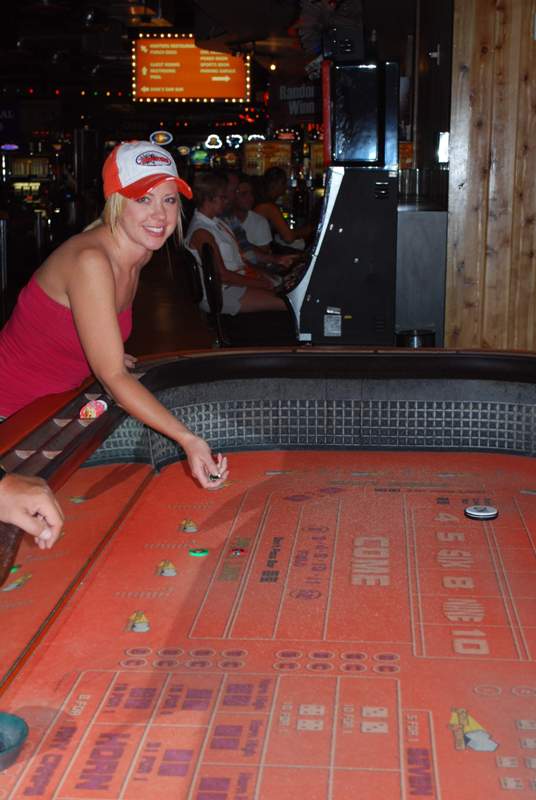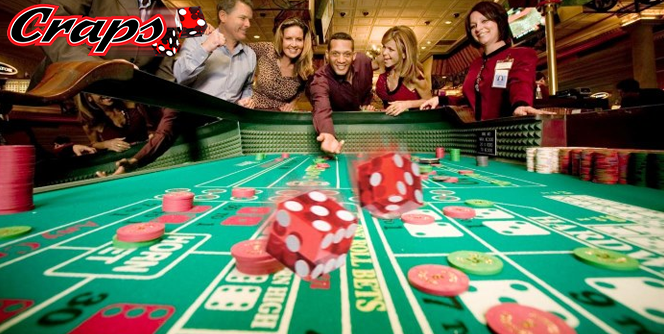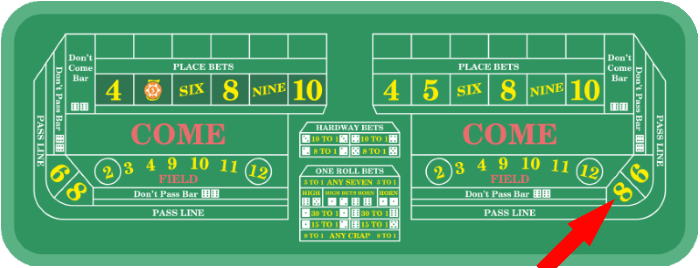A Place bet can be made for as little as $6. My point here is that there are other wagers on a craps game that are far superior to buying the 4, 10 or any number for that matter. While you can still find casinos that offer 100X Odds, most have moved to 3/4/5X Odds and some at 10X, which keeps your Come Bets producing less than Place Bets on the craps tables. Based on the findings above, unless you’re at a casino that offers at least 20X Odds AND have the bankroll to support $200+ bets, you’re significantly better. Can someone confirm the place bet rules for craps in Vegas (on the strip). Also, which casino on the strip has the cheapest craps table (for place bets). I read somewhere that Bill's gambling has a rapidpoker machine where you can bet in dollars and not have to worry about betting 5/6 dollar multiples for place bets.
Craps is a dice game that uses two six-sided dice and is one of the most popular games in American casinos. At first glance, it’s a straight-forward game: two dice are rolled on the game table, and the game develops according to their sum. BetVoyager’s version of this table game has its own distinctive features. Like many of our other games, we’ve sometimes deviated from the accepted rules in order to increase players’ payouts. We’ve also tried to simplify the rules so that our players can familiarize themselves with the game quickly.
BetVoyager offers our conventional version and a version with no house edge. The features of the latter are described at the end of this page.
Basic Rules
This casino game consists of successive series of rolls, and each series is called a round. The first roll in a round is the Come Out roll. If a 2, 3, 7, 11 or 12 is rolled, the round stops, and a new round starts. In this situation, a 7 or an 11 is called a natural, and a 2, 3 or 12 is called a crap. If a 4, 5, 6, 8, 9 or 10 is rolled, this is called rolling the Point. In that case, the number rolled is designated as the Point. The round now continues. It ends when either a 7 or the same Point is rolled. After this happens, the next round will begin with another Come Out roll.
To help the player keep track of the Point, the table has a puck, which is a small marker with OFF written on one side and ON on the other. The puck is OFF before the Come Out roll, and is flipped to ON and positioned near the Point once one is rolled:
There is a wide range of bets that can be made in dice game. Multiple bets can be placed simultaneously on the table. Paragraphs 3–8 describe the most commonly made bets.
Pass Line Bet
This bet can only be made before the Come Out roll. If a 7 or 11 is rolled during the Come Out roll, the Pass Line bet wins and pays 1:1. If the Come Out roll craps out (with a 2, 3 or 12), the Pass Line bet loses. If the Point is rolled, the Pass Line bet remains on the table until the end of the round. The player cannot modify or remove it during the round. If the Point is rolled before a 7, the Pass Line bet pays 1:1. If the opposite happens, the Pass Line bet loses.
A player that bets on Pass Line is hoping for a natural, since he’s more likely to win than lose during the Come Out roll. Once the Point has been rolled after the Come Out roll, the chances of winning decrease. The chances decrease most significantly when the Point is 4 or 10.
Don’t Pass Bet
A Don’t Pass bet is just like a Pass bet in that it can only be made prior to the Come Out roll and it cannot be removed or modified during the round. However, in all other respects these bets are polar opposites. If the Come Out roll is a 7 or 11, the Don’t Pass bet loses. If the Come Out roll is a 2 or 3, the bet pays 1:1. A 12 is a push, and the bet is returned to the player. During the round, if the Point is rolled before a 7, the Don’t Pass bet loses. However, if a 7 comes first, the bet wins and pays 1:1.
Unlike the Pass Line, when betting the Don’t Pass, the player’s worst odds are during the Come Out roll, when it is easier to lose than to win. Once the Point has been rolled, the player’s chances improve. His chances are the best when the Point is 4 or 10.
Pass Odds Bet
A Pass Odds bet can only be made after the player has bet the Pass Line and rolled the Point. This bet wins or loses under the same conditions as the Pass Line bet. If the Point is rolled before a 7, this bet wins. If a 7 is rolled, it loses. A Pass Odds bet offers fair odds, meaning there is no house edge when a player makes this bet. Since the chances of winning are less than 50%, these bets pay out more than the bet. The payout depends on the Point:
- for Points 4 and 10 – 2:1
- for Points 5 and 9 – 3:2
- for Points 6 and 8 – 6:5
The maximum size of this bet is twice the Pass Line bet. Once the Point has been rolled, the player can place a Pass Odds bet before any roll in the current round. This bet can be removed or changed at any time.
Don’t Pass Odds Bet
This bet is very similar to previous one. It can be placed once the Point has been rolled if a Don’t Pass bet has been made. This bet wins or loses under the same conditions as the Don’t Pass bet. If the Point comes before a 7, the bet loses. If a 7 is rolled, it wins. Like a Pass Odds bet, this bet offers fair odds. Since rolling 7 is more likely than the Point, this bet pays out less than 1:1. The payout depends on the Point:
- for Points 4 and 10 – 1:2
- for Points 5 and 9 – 2:3
- for Points 6 and 8 – 5:6
The maximum size of this bet is twice the Don’t Pass bet. Once the Point has been rolled, the player can place a Don’t Pass Odds bet before any roll in the current round. This bet can be removed or changed at any time.
Come Bet
A Come bet is similar to a Pass Line bet, but it can be made before any roll except the Come Out roll. In other words, a Come bet can only be placed after the Point has been rolled.
Once a Come bet is made, the next roll plays the role of the Come Out roll for the player. If a 7 or 11 is rolled on the next roll after placing a Come bet, it wins. It loses when a 2, 3 or 12 is rolled. Otherwise, a new Point called the Come Point is established. It is marked by moving the Come bet from the Come field onto the corresponding number in the space at the top of the table:
Odds can also be placed on the Come Point. The rules and payouts are the same as for Pass Odds, and the bet is placed near the Come bet:
Don’t Come Bet
A Don’t Come bet is similar to a Don’t Pass bet, except that, like the Come bet (paragraph 7), it can be made before any roll except the Come Out roll. If a 7 or 11 is rolled on the next roll after placing a Don’t Come bet, it loses. It wins when a 2 or 3 is rolled, a 12 is a push. If a Come Point is rolled, the bet moves to the box of the corresponding number. Odds can be placed near the Don’t Come bet:

All the bets described below are sometimes called secondary, but many players prefer to play them. These bets can be made before any roll, and they don’t have any connection to the rounds. They can be changed or removed from the table at any time.
Place Win Bet
A Place Win bet can be made on any of the following numbers: 4, 5, 6, 8, 9 or 10. The player can make several bets on different numbers. The bet wins if the indicated number comes before a 7. If a 7 is rolled first, the bet loses. The payout depends on the number bet on:
- for numbers 4 and 10 – 19:10
- for numbers 5 and 9 – 7:5
- for numbers 6 and 8 – 7:6
Place Lose Bet
A Place Lose bet is the opposite to a Place Win bet. If the number comes before a 7, the bet loses. If a 7 is rolled first, the bet wins. The payout depends on the number:
- for numbers 4 and 10 – 5:11
- for numbers 5 and 9 – 5:8
- for numbers 6 and 8 – 4:5
Buy Bet
The Buy bet is very similar to the Place Win bet (paragraph 10), except for that the payouts are fair odds, just like for Pass Odds bet (paragraph 5). However, when making Buy bets, the casino takes 4% off the player’s net winnings. This is how the payout, which depends on the number, looks:
- for numbers 4 and 10 – 48:25
- for numbers 5 and 9 – 36:25
- for numbers 6 and 8 – 144:125
Lay Bet
The Lay bet is similar to the Place Lose bet (paragraph 11), except for that the payouts are fair odds, just like for Don’t Pass Odds (paragraph 6). In Lay bets, like in Buy bets, the casino takes 4% off the player’s net winnings. This is how the payout, which depends on the number, looks:
- for numbers 4 and 10 – 12:25
- for numbers 5 and 9 – 16:25
- for numbers 6 and 8 – 4:5
Big 6 and Big 8 Bets

Big 6 and Big 8 bets resemble making a Place Win bet or Buy bet (paragraphs 10, 12) on the numbers 6 and 8. A Big 6 bet wins if a 6 comes before a 7, while a Big 8 bet wins if an 8 is rolled before a 7. The payouts for Big 6 and Big 8 bets are 1:1.
Hard Way Bets
With this bet, the goal is to roll the selected sum (4, 6, 8 or 10) the Hard Way, which means rolling doubles. 4, 6, 8, and 10 the Hard Way are, respectively, 2-2, 3-3, 4-4, 5-5. Rolling those numbers with any other combinations is called the easy way.
A Hard Way bet can be made on any doubles, and multiple bets on different doubles are allowed. The bets stay in place until a 7 or the selected sum (4, 6, 8 or 10) is rolled. The bet wins when the player rolls the selected sum the hard way. In other words, the bet wins only when doubles are rolled. For example, a bet on 4-4 (8 the hard way) loses if any of the following combinations are rolled: 6-2, 5-3, 6-1, 5-2 or 4-3.
The payout for winning a Hard Way bet:
- for 2-2 and 5-5 – 15:2
- for 3-3 and 4-4 – 19:2
There are several One Roll bets, as well. These bets, which are described below, win or lose after the roll. These bets are often called proposition bets.
Field Bet
The Field bet wins if 2, 3, 4, 9, 10, 11 or 12 is rolled. If any other number is rolled, the bet loses. The payout depends on the number that is rolled:
- for number 12 – 3:1
- for number 2 – 2:1
- for any remaining numbers – 1:1
Horn Bet
The Horn bet can be placed on any of the following numbers: 2, 3, 11 or 12. Multiple bets can be made on different numbers. The bet wins if the number bet upon is rolled. Otherwise, the bet loses. The payout depends on the number that is bet upon:
- for numbers 2 and 12 – 33:1
- for numbers 3 and 11 – 16:1
Any Seven Bet
This bet is that a 7 will be thrown. The bet wins if a 7 is rolled and loses if anything else is rolled. It pays out 9:2.
Any Craps Bet
The player bets that any craps will be rolled. If a 2, 3 or 12 is thrown, the bet wins. Otherwise, the bet loses. It pays out 15:2.
C & E Bets
These bets are different versions of the bets described above. A bet on the C field is the same as the Any Craps bet, and a bet on the E field (Eleven) is the same as a Horn bet on the 11.
Additional Information
To make a bet, it is first necessary to choose a chip with the desired face-value. At the beginning of the game, this chip is chosen by default, and the chip with the minimum face-value fixes itself onto the cursor. If the player wants a chip with a different face-value, he can select it by clicking on that chip with the cursor. The player can also use the scroll wheel on his mouse to change the chip’s value. After the chip is selected, the player can place a bet by clicking the mouse on the desired part of the game table and his bet will appear there. Each subsequent click adds another chip of the selected face-value to the bet. If the player wants to remove the last chip from his bet, he can remove the chip fixed onto the cursor by clicking the cursor on any empty part of the game window and then clicking on this bet.
The 'Clear' button can be pressed to remove all bets that are eligible for removal according to the rules.
If the player wants to restore the same bets that were on the table before the previous roll, he can press the 'Rebet' button. If any of the bets from the last roll contradict the rules of the game, they aren’t put into play.
The dice are rolled as soon as the player presses the 'Roll' button. If there are no bets on the table, this button can’t be pressed.
A standard game table has parameters from 1 to 1000. It means that the minimum size of any bet is €1 and the sum of all bets on the table cannot exceed €1000. Furthermore, the following rules are applied:
- The maximum size of Horn bet is €25.
- The maximum size of Hard Way, Any Seven and Any Craps bets is €50.
- The maximum size of the remaining bets (except for Odds bets) is €100.
- The maximum size of the Odds bet is twice the original bet and, therefore, the maximum Odds bet is €200.
When the cursor is moved over any field of the game table, a bubble help appears that indicates the name of the field and its attributes (the minimum and maximum bets, payout). This is how it looks:
The payouts on all bets are rounded down to the nearest cent.
In our No House Edge version of the game, the maximum size of any Odds bets has no relation to the size of primary bets (bets on the Pass Line, Don’t Pass, Come or Don’t Come). The maximum Odds bet is €200. If a primary bet is €10 and Odds bet is €200, then the house edge will be about 0.1%. If a primary bet falls to €1, the house edge will be reduced to 0.01%.
Furthermore, the casino doesn’t take the standard 4% from the player’s win in payouts for the Buy bet and Lay bet, eliminating the house edge on these bets, as well.
Craps Rules Come Bet

Betting In Craps Rules
Please note that the casino retains its advantage for all other bets.